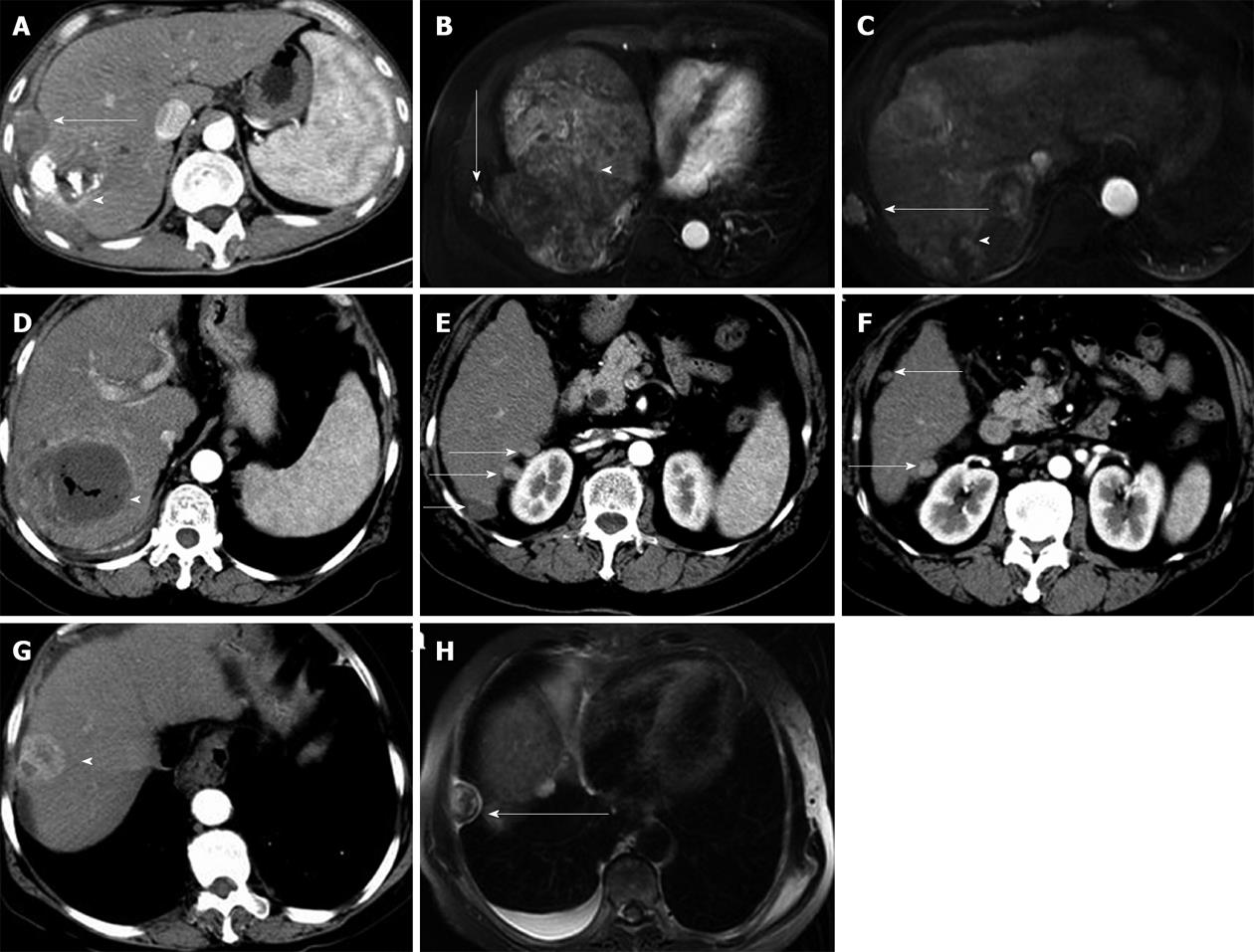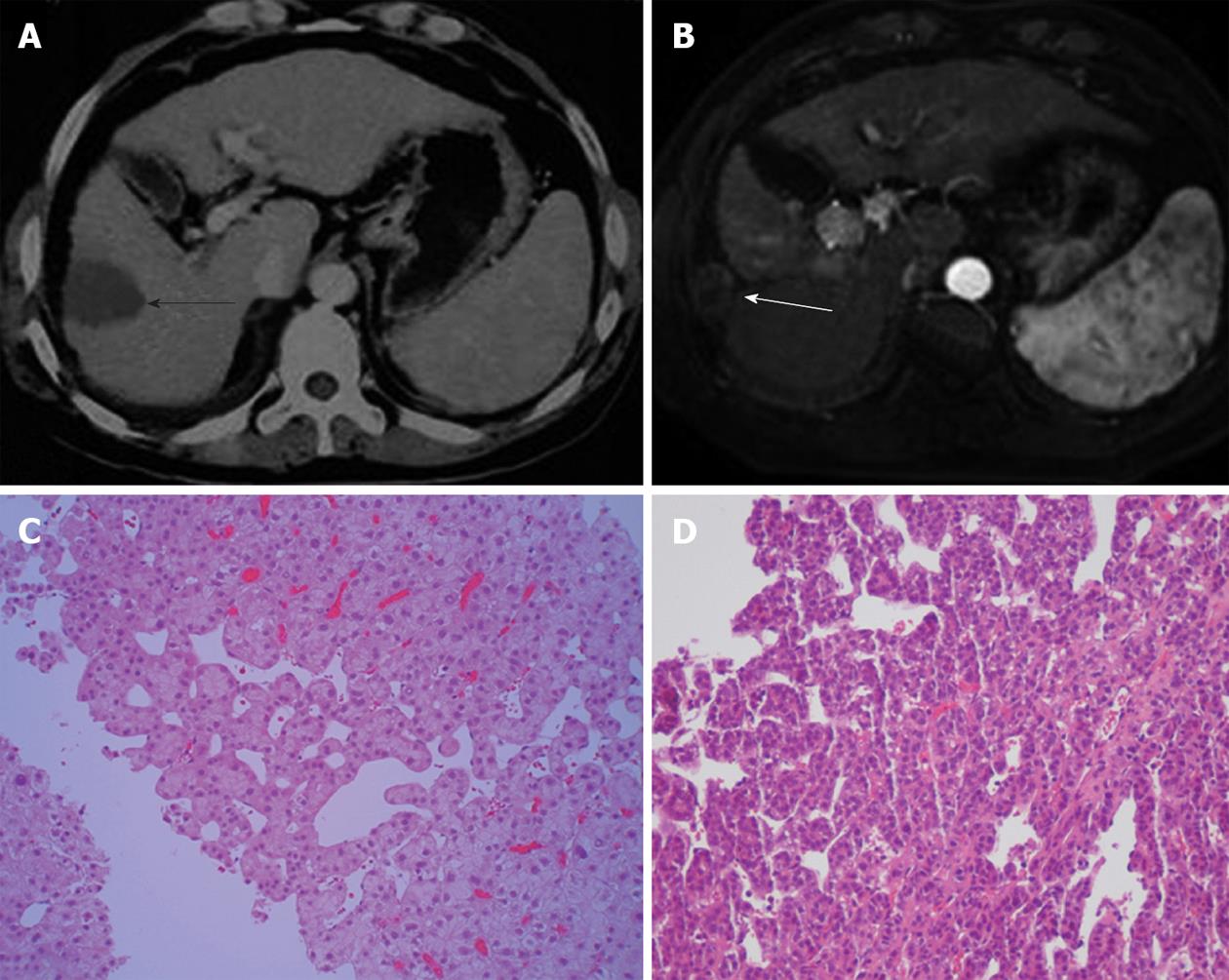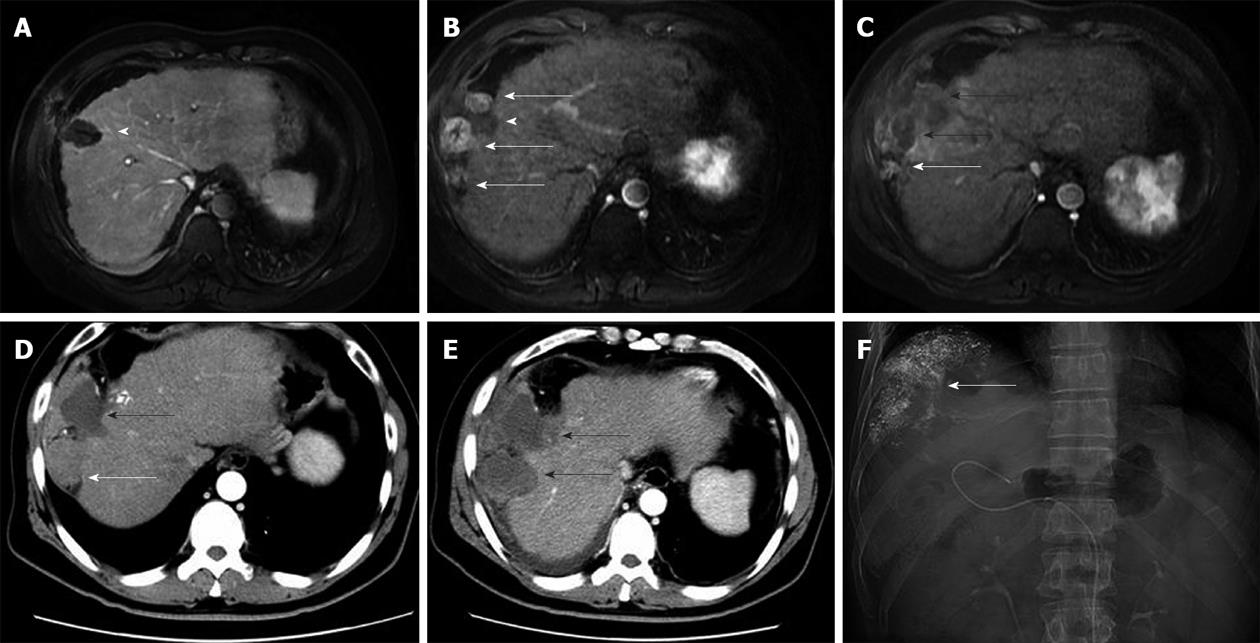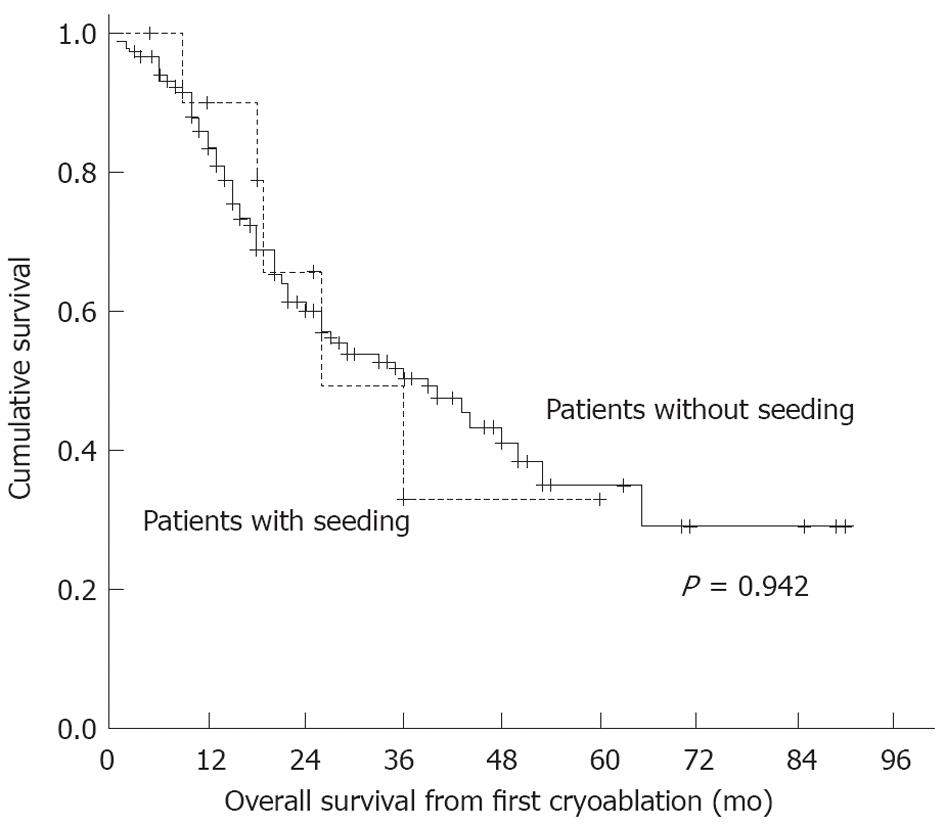Copyright
©2012 Baishideng Publishing Group Co.
World J Gastroenterol. Dec 7, 2012; 18(45): 6587-6596
Published online Dec 7, 2012. doi: 10.3748/wjg.v18.i45.6587
Published online Dec 7, 2012. doi: 10.3748/wjg.v18.i45.6587
Figure 1 Cumulative tumour seeding rate.
The cumulative rate was 0.49% at 1 year and 1.0% at 2 years.
Figure 2 Locations of hepatocellular carcinoma and of seeding after cryoablation.
A: Intraperitoneal seeding (case 4); B: Intraperitoneal and intercostal muscle seeding (case 6); C: Seeding in subcutaneous fat (case 3); D: Complete ablation of primary hepatocellular carcinoma (HCC) (case 11); E and F (case 11): Multiple, small, intraperitoneal seeding nodules 1 mo later; G: Complete ablation of primary HCC (case 5); H: Pleural seeding nodules 1 mo later (case 5). Arrowheads indicate primary HCCs, arrows indicate seeding.
Figure 3 Computed tomography showing tumour seeding in case 2 after cryoablation for hepatocellular carcinoma, with a history of transcatheter arterial chemoembolisation.
A: Contrast-enhanced computed tomography (CT) image showing a 3-cm diameter hepatocellular carcinoma (HCC) in segment II before cryoablation (black arrow); B and C: Contrast-enhanced CT images during the arterial phase (B) and portal-venous phase (C) showing intraperitoneal seeding (white arrow) at 2 mo after biopsy and percutaneous cryoablation. The tumour showed hyperattenuation during the arterial phase and hypoattenuation during the portal-venous phase, similar to the primary HCC. Histopathological examination of the seeded tumour showed a poorly differentiated HCC. Note that the intrahepatic tumour was completely ablated.
Figure 4 Computed tomography image and histopathology of primary and seeded tumours (case 10).
The 58-year-old woman underwent biopsy and percutaneous cryoablation for a 2-cm diameter subcapsular hepatocellular carcinoma (HCC). A: The tumour was completely ablated (black arrow); B: Intraperitoneal seeding at 18 mo after treatment (white arrow); C: Histopathological examination of the biopsy specimen from the primary tumour showed a well differentiated HCC; D: The seeded tumour was resected, and histopathological examination showed a well differentiated HCC. The patient was alive and tumour-free at 60 mo after cryoablation.
Figure 5 Patient treated with sorafenib plus cryoablation and transcatheter arterial chemoembolisation for hepatocellular carcinoma seeding (case 7).
A: Complete ablation of the subcapsular hepatocellular carcinoma (arrowhead); B: Multiple, small, intraperitoneal seeded nodules (white arrows); C: Seeded nodules were treated with cryoablation (black arrows) plus sorafenib; D: Recurrence of seeding (white arrow); E: The recurrent seeding was treated with cryoablation (black arrows); F: The seeding was also treated with transarterial chemoembolisation (white arrow). Six months later, there was no further recurrence.
Figure 6 Cumulative overall survival in patients with and without tumour seeding.
Survival curves are drawn according to the Kaplan-Meier method, using the log-rank test.
Figure 7 The sheath introducer system.
The cryoablation needle (black arrow) is inserted and removed through the sheath introducer system (white arrow).
- Citation: Wang CP, Wang H, Qu JH, Lu YY, Bai WL, Dong Z, Gao XD, Rong GH, Zeng Z, Yang YP. Tumour seeding after percutaneous cryoablation for hepatocellular carcinoma. World J Gastroenterol 2012; 18(45): 6587-6596
- URL: https://www.wjgnet.com/1007-9327/full/v18/i45/6587.htm
- DOI: https://dx.doi.org/10.3748/wjg.v18.i45.6587















